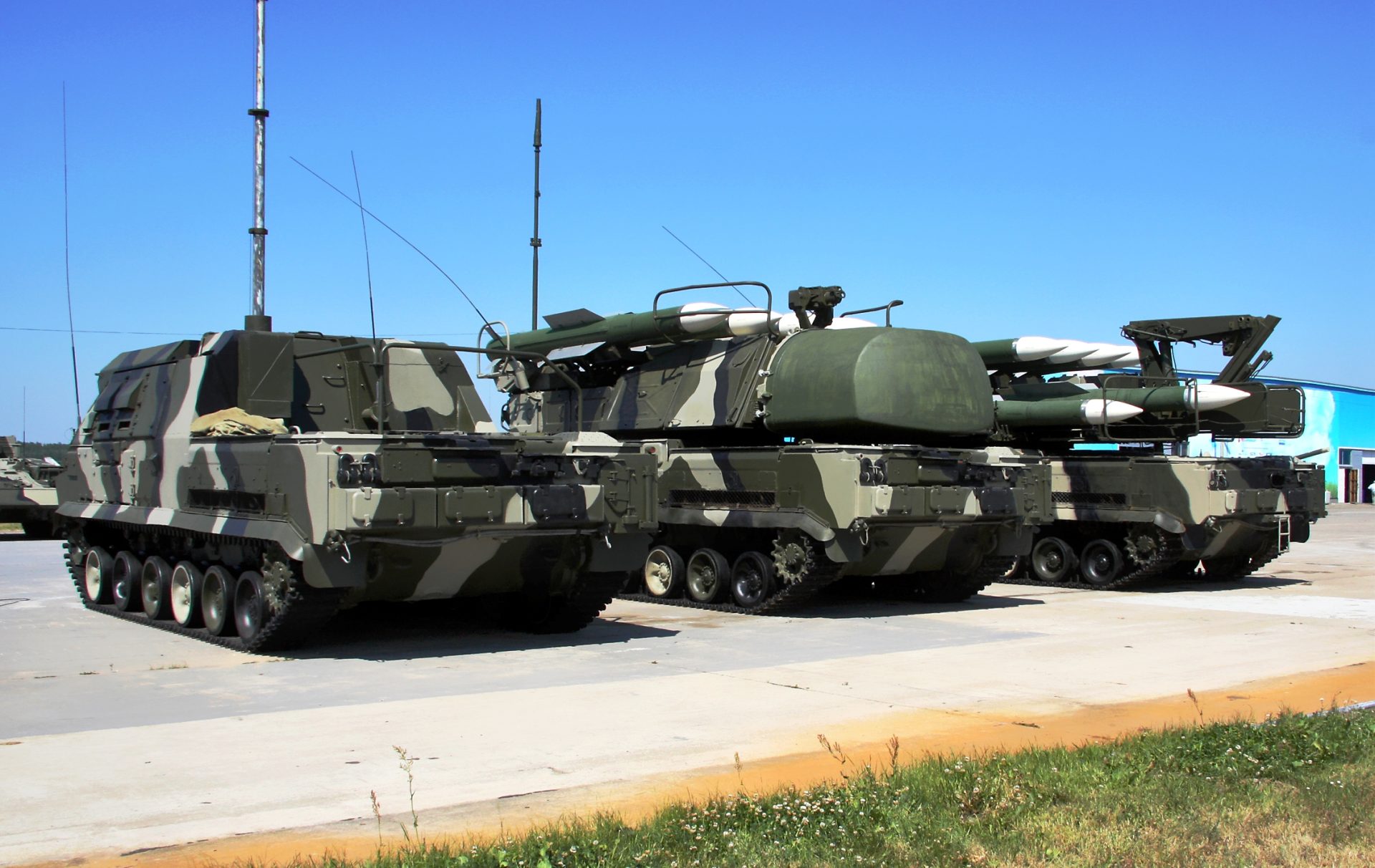Video has emerged in the last 12 hours documenting a Russian Surface Launched missile engaging its own firing unit upon launch. In the video, it is clear that the firing unit had already fired two missiles based on the smoke trail. However, upon launch of the third missile, there is an abrupt turn, in which the missile struck its own unit. This apparently happened in Alchevs’k, Luhansk Oblast, Ukraine.
Russian surface-to-air missiles in Ukraine have been following a SHOOT-SHOOT-LOOK method in which a single Transporter Erection Launcher (TEL) or a number TELs will fire a salvo of two missiles to ensure a higher probability of kill (pK), but reserve a salvo for follow on engagements and force protection from Precision Guided Munitions (PGMs). However, the single TEL, seen in the video, fired at least three missiles, indicating a permissive environment in which the battery was probably being engaged by PGMs.
From the video it is clear that the TEL in question was firing at an angle, indicating a tactical SAM from the BUK family. Only two surface-to-air missiles in the Russian arsenal have off the rail active homing, the 9M317M / 9M317ME, which are fired from the SA-17 (BUK-M3) Although we do not have insight into the trajectory of the first two missiles, the third missile obviously turned because it left the TEL already in active homing. The turn was not caused by an airframe or propellant malfunction due to the clean angle of maneuver, as some open source analysts have commented. While it is possible that this firing unit may be an S-400 strategic SAM, the canted appearance of the TEL and the proximity of the TEL to the forward line of troops in Lysychansk indicates this is a tactical unit.
Active homing missiles can leave the firing unit without input from a Target Engagement Radar (TER) and Acquisition Radars (TAR) because the seeker head had its own emitter which guides the missile. The Russian firing unit most likely was emptying its supply of missiles for self protection, but made the fatal mistake of not turning off its engagement radar while firing an active homing missile. A standard Buk battalion consists of a command vehicle, target acquisition radar vehicle, the most likely casualty, six transporter erector launcher and radar vehicles and three transporter erector launcher vehicles. A Buk missile battery consists of two TELAR and one TEL vehicle. It is also possible that this unit was co-located with an electronic warfare system that was emitting. Western observers have noted the absence of EW emitters with Russian Ground Forces, who boast an impressive arsenal of UHF, VHF, and SATCOM jammers. This incident may be the reason for that absence; Russian Aerospace and Ground Forces have not trained to competency in operating jointly.

